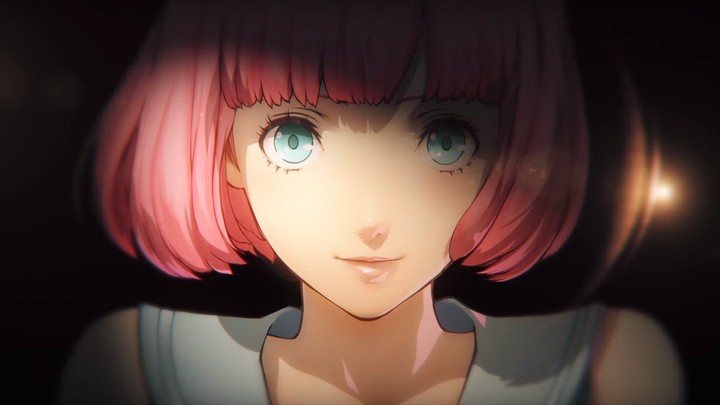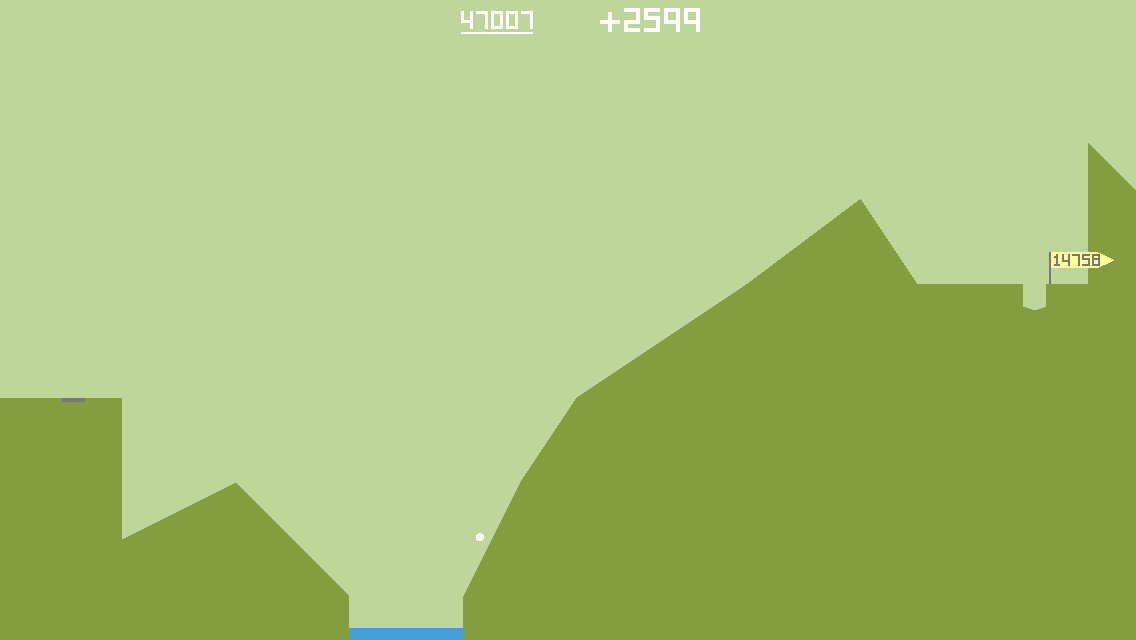Atlus, We Haven't Forgotten Your Mishandling of LGBTQ Characters
Atlus has a history of mishandling LGBTQ characters. The new 'Catherine: Full Body' trailer doesn’t inspire hope for a course correction.
Content-warning: transphobia, and graphic descriptions of transphobic violence
There are two defining images in the reveal of Catherine: Full Body's newest character, Rin. The first is in the trailer, which ends with protagonist Vincent waking up next to a naked Rin and getting a good look below her waist, eyes going wide with terror as he lets out a horrified wail. The second image is in a poster with Rin lifting her skirt to show us her genitals, which are obscured in shadow while Vincent's traumatized eyes stand right in front of them. Ads with the other Catherine girls also covered their genitals for titillation. Rin's ad is not titillation. The framing, the contrast of colors, Vincent's eyes, all convey a specific visual language of dread, of an unspeakable horror hiding in plain sight, a monstrosity in the guise of a girl.
This is perhaps the most commonly used transphobic trope in media: the deceptive trans woman, tricking hapless heterosexual men into having sex with them. It's a lazy, regressive device on its own; but with Catherine's developer Atlus, it comes with a storied history of degrading their trans and queer characters. (Be warned: spoilers for Catherine and Persona 4 follow).
Catherine: Full Body's hard swerve into transphobia should come as no surprise to anyone who's played the original Catherine or the Persona games from the same team. Persona 2: Innocent Sin has a character respond to a trans male's appearance by saying “She looks cute.” Persona 3's infamous beach scene featured a trans female predator who's outed by a bit of facial stubble she missed while shaving. Persona 5, while not outwardly transphobic, still features numerous instances of gay panic. As a queer fan of the series—one who even has Persona 5 as their #2 game of the year—it often feels like Atlus hates its queer audience.
It's frustrating because they've made earnest attempts to honestly portray queer and trans identity, providing rare crumbs of visibility in a medium that makes us invisible. But visibility only damages when it's mired in harmful ideas, and never is that more apparent than with Persona 4's Naoto Shirogane.
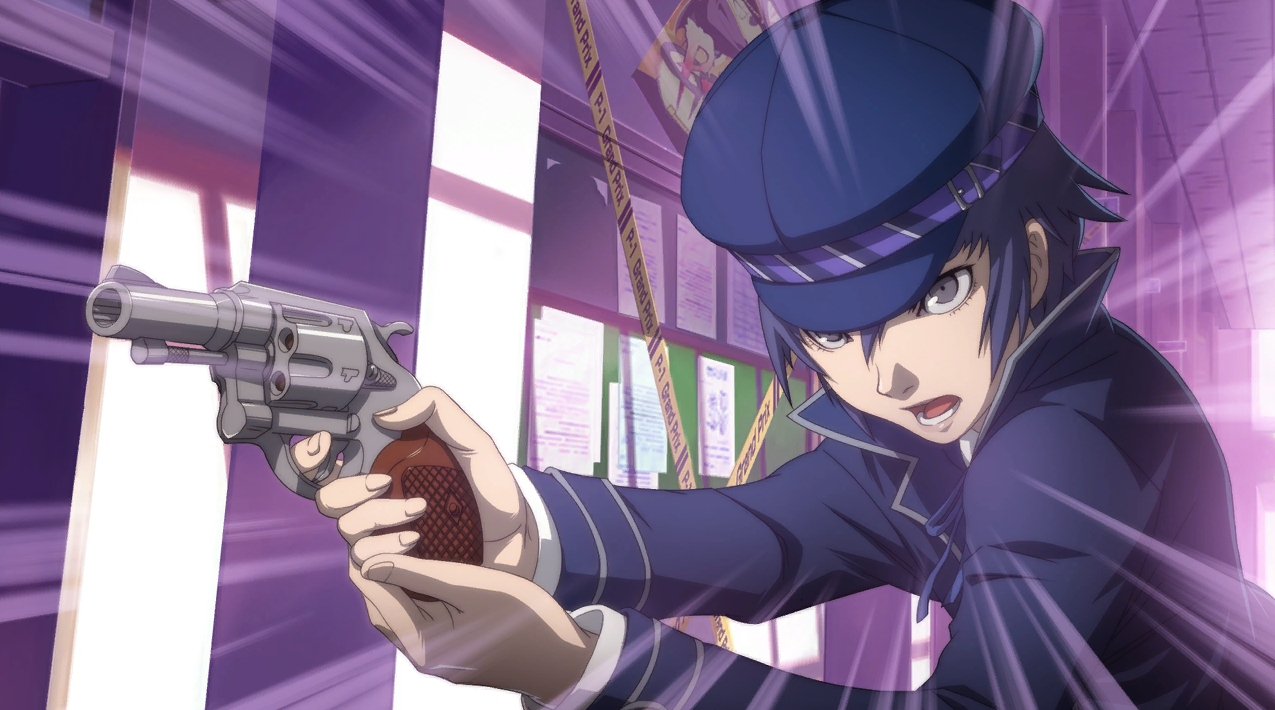
Naoto is an assigned-female-at-birth detective who presents as male in their daily life, his struggle to come to terms with his gender identity a rare instance of empathy in a series that's needlessly cruel to LGBT people. But Atlus demolishes that initial good will over the course of the game. Naoto's dungeon, which represents his psyche, has him threatening to perform a “dangerous experiment” on himself that's later revealed to be some form of gender reassignment surgery. Your goal as the player character is to stop him from making that decision, ultimately framing Naoto as a woman fed up with the demeaning treatment from their male peers. This, despite a later hot springs scene where Naoto's visibly uncomfortable with his naked body paired alongside his cis female companions, and other clear signs of gender dysphoria.
The most damning insult to his identity comes when you decide to initiate the romance route with him. During an intimate moment between you and Naoto where he expresses his wish to have been born a boy, you are able to initiate romance with him by responding, “I’m glad you’re a girl.” Later, after confessing your love, you’re able to ask him to change his talk in a higher pitch to sound more feminine. If you do so, Naoto comes to school in a girl’s uniform during the Christmas event. However valid his feelings are, Naoto’s identity hinges on your cis character’s gatekeeping to be seen as valid, and that has left queer fans in the position of needing to reclaiming his identity .
This conflicting tug of empathy and delegitimization can be found in the real world, where the United States Conference of Catholic Bishops published an open letter calling for compassion toward trans people while condemning parents who acknowledge their children's trans identities. Naoto Shirogane is Atlus' trans child, his legitimate desires and struggles written-off and dismissed in a way that his cis-hetero companions aren't, and that contradictory ethos carries over to Catherine.
Catherine centers around a strain of mysterious nightmares that only affect men and end in death, which plague our hero, Vincent, after he cheats on his girlfriend Katherine with a girl named... Catherine. Over the course of the game you drink with friends, complain about your problems, solve puzzles, and converse with other men who are suffering through the same nightmares. At one point, one of your childhood friends, a waitress named Erica, tells you she's experiencing these nightmares. But don't they only affect men? You see where this is going.
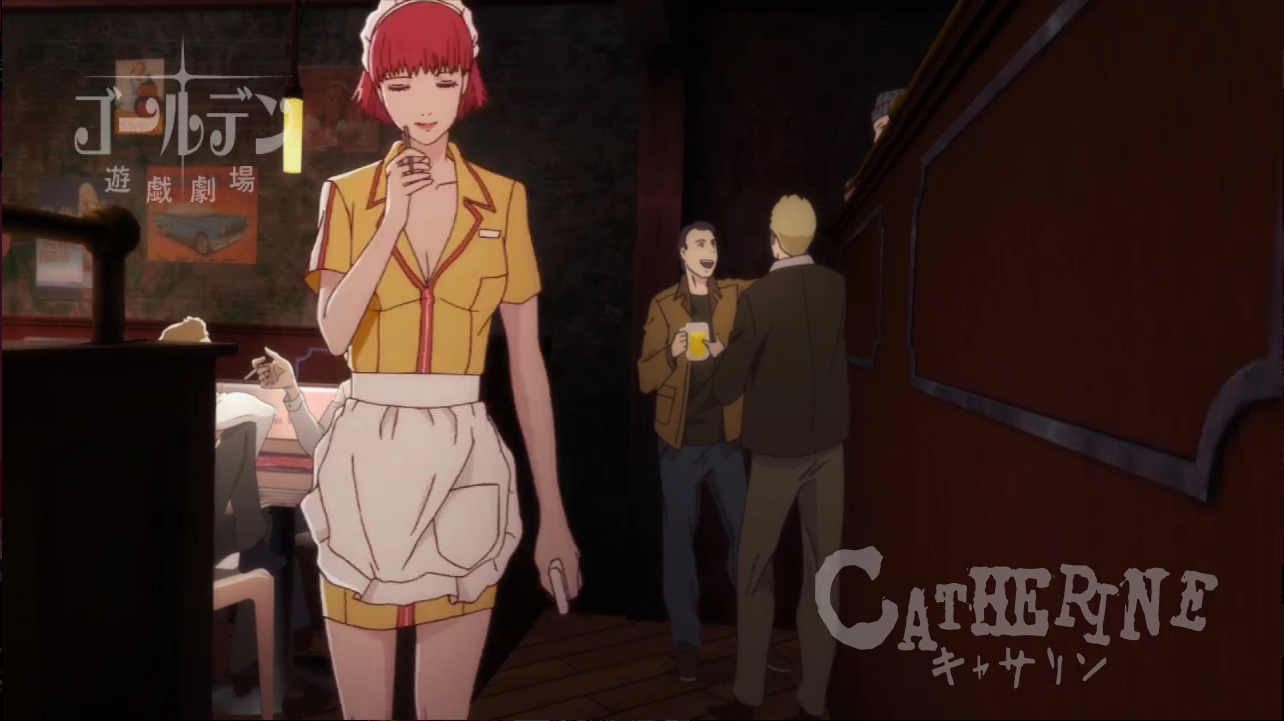
It is foreshadowed throughout that Erica is transgender, and though she's presented as a content, sexually confident woman, the game continually demeans her simply for being trans. When one of Vincent's friends, Toby, starts dating her, everyone in your friend circle snickers, unable to tell him the “truth.” Toby describes the sex with her as “weird,” the game othering her body relative to cis bodies.
By the end of the game, when Toby's disgusted at the reveal of her trans status, his friends laugh at him like they'd successfully executed the punchline to a long-running joke. Toby's attraction to a trans woman is embarrassing, emasculating, “gay.” On top of all this, Erica sees the same nightmares Vincent's getting because she's really just a “man” like the rest of 'em.
Why aren’t we letting trans creators tell these stories?
The transphobic lens through which Catherine views Erica is hardly new or surprising within the context of Atlus' other games. But it's not like the game’s depiction of cis people offers any nuance by comparison. Catherine purports to be a game explicitly about gender differences, trying to honestly examine the sexual power dynamics between (cis) men and women. But it only plays in Types. All men are cheating scumbags, Katherine is the “nagging shrew,” and Catherine is a femme fatale who's later revealed to be a literal succubus who “tricks” men into cheating on their partners. Erica being a classic “deceptive trans woman” isn't just the continuation of a trend, but a product of Catherine's thesis of gender essentialism.
“Gender essentialism” is the theory that our gender differences are innate, universal, and—according to transphobes—biological. Atlus' games are rife in essentialism. Erica will always be a man according to Atlus, so she is still treated as such. Naoto's desire for gender reassignment is deemed irrational and potentially damaging because, really, he'll always be a woman.
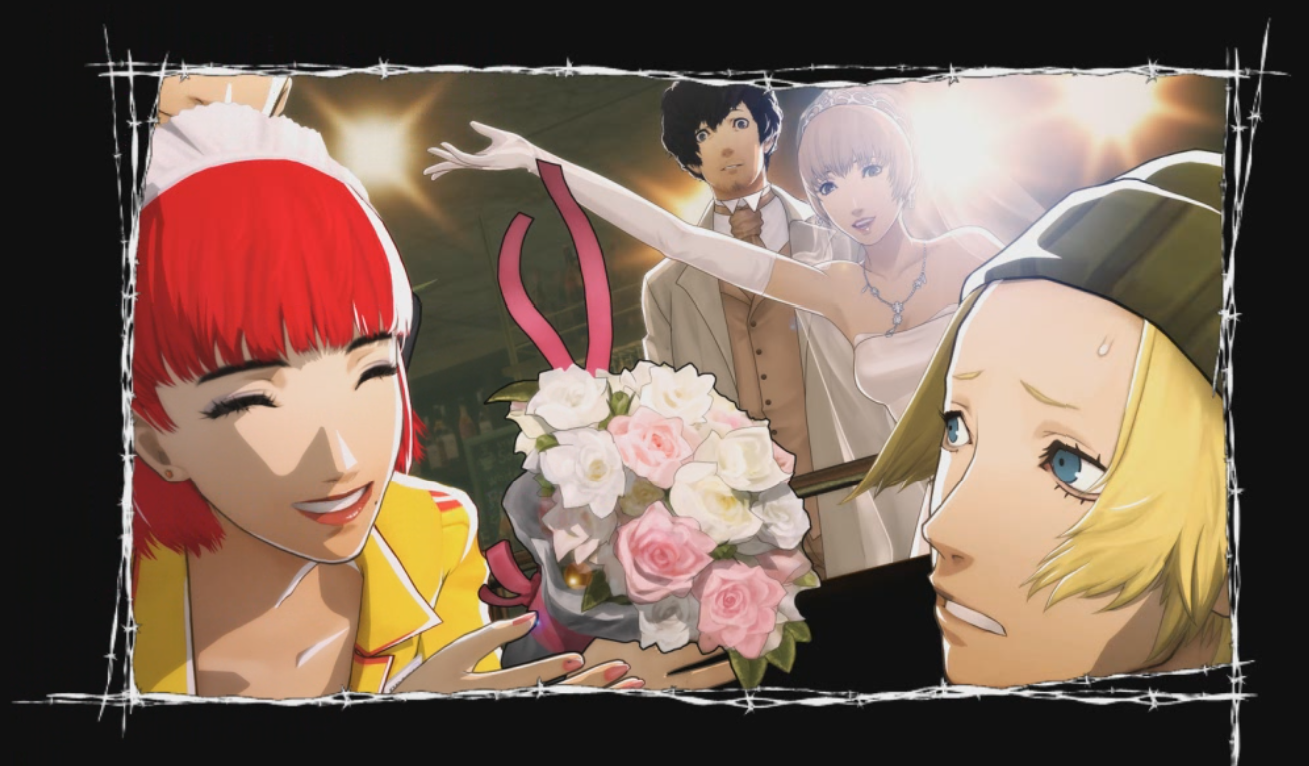
By the game's end, the nightmares are revealed to be divine punishment on men who stall procreation, shepherding women to men who can better serve the population growth. Men like Vincent, then, are expected to fall for the trap of Catherine without fail. In this way, 'Catherine' frames the struggle against these forces as a rebuke to socially assigned gender roles, with Vincent standing up for men everywhere who are pressured to treat women a certain way... except that never changes his actions throughout the rest of the game. Rather than harshly judge Vincent's shitty behavior, 'Catherine' instead absolves him. His very real cheating is spun as a divine trick that isn't really his fault, but that of the cruel god that sought to punish an “innocent man” for no good reason.
Instead of allowing a deeper understanding of either gender, Catherine lets its straight, cis male hero get away with fucking another woman without his nagging girlfriend finding out. The status quo remains largely unchanged, and everyone still laughs at Toby for sleeping with Erica. Essentialism in Catherine isn't just the driving force of its transphobia; it's also a system of belief that excuses male behavior. After all, how could Vincent resist Catherine's charms? Men will be men, and it's her fault for exploiting that fact.
Now, with Catherine: Full Body's Rin, that gender essentialism continues unabated, bringing the original's trans panic in an uncomfortable spotlight.
Above: The Japanese trailer for Catherine: Full Body.
Even with the little we've seen of her, Rin is nearly every “deceptive trans woman” cliché rolled in one. Hyperfeminine, gender-neutral name, horror-movie cinematography as soon as her skirt's off. The damn logo of the game is formed from the silhouette of a leering shot of her panties, begging the audience to discern for themselves, “C'mon. Guess what's under there.” She's less a character designed by artists so much as by iconography; the iconography of The Crying Game, Dressed To Kill, Ace Ventura: Pet Detective, and Jerry Springer.
And yet, certain subsections of the internet are defending Rin from a perceived “SJW” backlash. Some of these defenses are typical, such as the GamerGate pet-cause of “censorship.” Others are adopting the wait-and-see approach, arguing that the game can potentially be an honest exploration of gender identity, as if Atlus' track record and marketing weren't huge red flags.
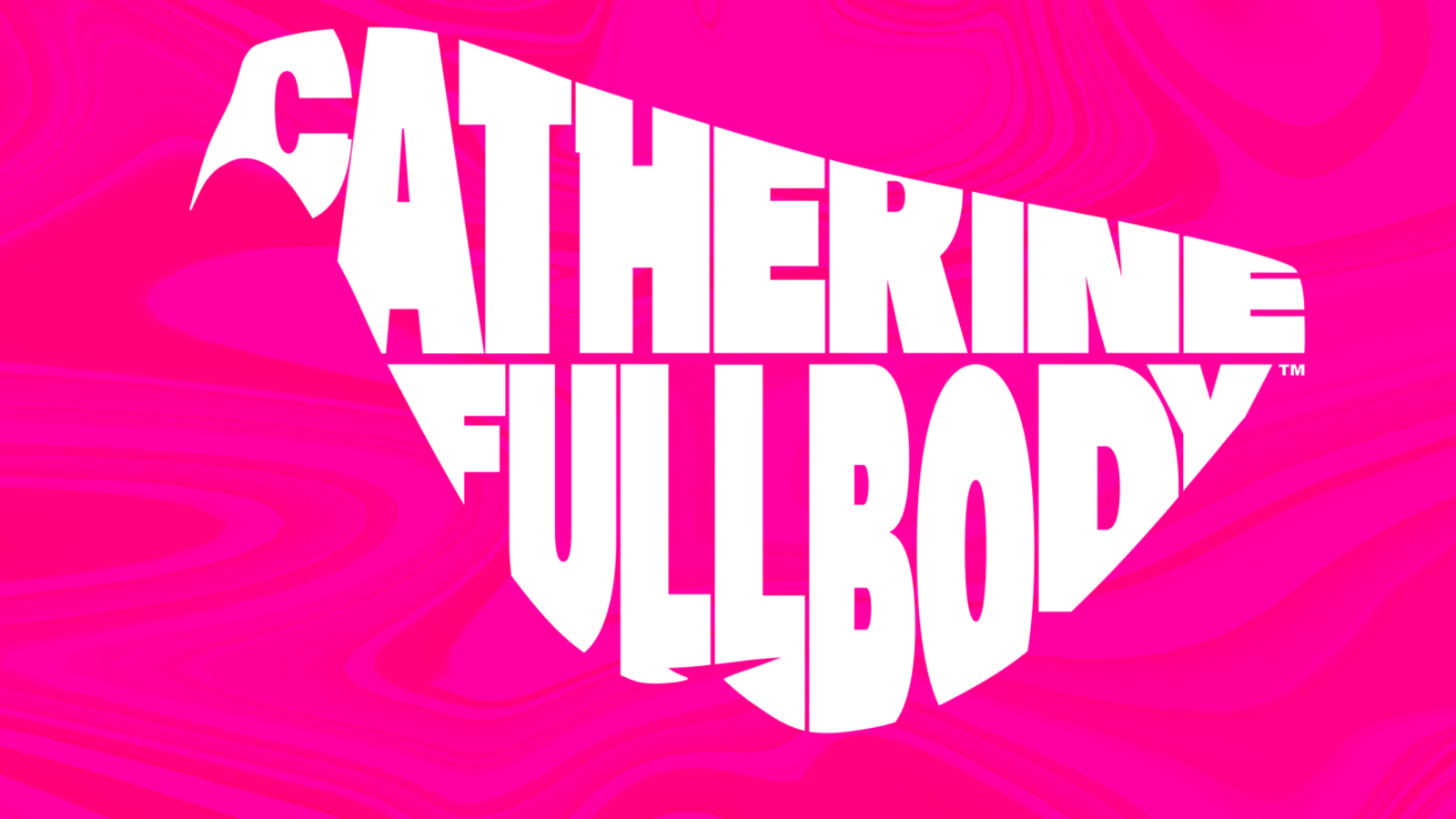
One common defense I’ve seen on Twitter is the notion that Rin isn’t actually trans, despite being shot in trans-coded visual language, having a webpage with a site icon that evokes the internationally used transgender symbol, and adorning herself in the colors of the transgender flag. Instead, these arguments use a very different yet intrinsically linked term to describe Rin:
A “trap.”
But what is a trap, and why do gender essentialists gravitate towards it? While the term is often reappropriated by folks in the trans community, it retains its harmful connotation in the hands of cis people. Many in the anime and anime games community often use “trap” to describe characters who don't identify as female but present as such anyway, “trapping” the usually heterosexual, cisgender male hero into being attracted to them (a recent example is Felix in the anime Re:Zero). This time it's “correct” to call them male because a trap knows they're “actually” male. It's the gender essentialist's platonic ideal of the “deceptive trans” trope. It's saying the quiet part loud.
And it's existed beyond Japanese media, long before western anime fans made it part of their lexicon, as a persistent part of the transgender experience—a part that threatens our lives on a daily basis.
Here are the facts:
In July of 2017, Dee Whigham was murdered by a former US Navy sailor, who stabbed her 119 times when she disclosed her trans status after they had sex. “I lost it, I lost it,” he told the police, claiming he didn't remember much afterwards. He stabbed her in the face multiple times before slashing her throat, according to reports.
In 2002, Gwen Araujo was brutally beaten to death and strangled by a group of men in Newark, California after two of them, who had sex with her, later discovered she was transgender. During their trial, the men invoked a “trans panic” defense to justify their murder and attempt to shorten their sentence.
In 2014, a U.S. marine strangled a trans sex worker in the Phillippines and successfully deployed the trans panic defense, downgrading his sentence from the usual 20-40 years for homicide.
California and Illinois are the only states in the U.S. that have outlawed the trans panic defense today. It remains legal in 48 states and in many countries around the world.
According to the Human Rights Campaign, there have been 25 murders of trans people in America this year, the deadliest on record. 2015 and 2016 were consecutively the deadliest on record before then. The majority of those murders were of trans women of color, who are disproportionately targeted in a community that already faces a higher threat of violence than others.
In July 2017, the same month as Dee Whigham's murder, comedian Lil Duval proclaimed on a radio show that he'd kill a woman he was dating if he found out she was transgender. “I don't care, but, she dying,” he said to thousands of listeners. “You manipulated me to believe in this thing. In my mind, I'm gay now.”
In other words, they'd trap him.
Knowing what we know about Atlus’ history with trans people and the real world effects of its essentialist worldview, we can’t in good faith expect Rin to be an empathetic portrait of a transgender woman. So instead, let’s ask a more important question: Why aren’t we letting trans creators tell these stories?
Our increased visibility can only do harm when we place our stories in the hands of cis developers. If gaming really wants to show our lives, simply offering us a seat at the table wouldn’t be an insurmountable step. We have lots of weird, funny, horrifying, incredible experiences to share, and gaming would make a fantastic avenue for sharing them. Propping up trans creators and collaborators can only evolve the medium’s potential to create radical new experiences. We should be pushing for that kind of progress before we give games like Catherine: Full Body the time of day.
